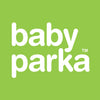Harnessing baby to the car seat
There are 2 steps to ensuring your child’s car seat works in a car accident:
The first step is properly installing the seat to the car. We strongly recommend seeking a professional Child Passenger Safety Technician (CPST) to teach you how to correctly install your seat. Use our directory to find a tech.
The second step is to securely harness your baby to the car seat so they stay secured in an accident. Improper harnessing is a leading cause of car seat failure. This is partly due to the fact that we do it so often.
We are constantly buckling and unbuckling our babies in and out of swings high chairs strollers and car seats. It is easy to forget that car seats save lives, none of those other items will be travelling at speeds of 100km/h. Most of the time car seats won’t need to save a life either but you never know...accidents are unpredictable. Properly used car seats reduce fatalities and serious injury by over 70%.
what to remember when buckling
When you are buckling baby into their car seat imagine an upside down roller coaster. Think about how tight you want that harness to be. Do you want it a little loose? Some extra breathing room? Or do you want it snug?
That is how your baby needs to be harnessed during an accident. It is how they need to be harnessed every time you drive.
3 point checklist
1 - shoulder strap placement, rear facing seats should be at or below and forward facing seats should be at or above
2 - reduce bulk, dress baby/toddler in thin layers, add warmth over harness system
3 - no slack in harness strapping, you should not be able to pinch the strapping, make sure straps lay flat without twists
After you have buckled baby in always tug on straps to make sure it is secure. Also tug on the car seat, if it moves more than an inch you need to tighten it up.
Always check to make sure your child’s height and weight fall in the range of the car seat you are using.
